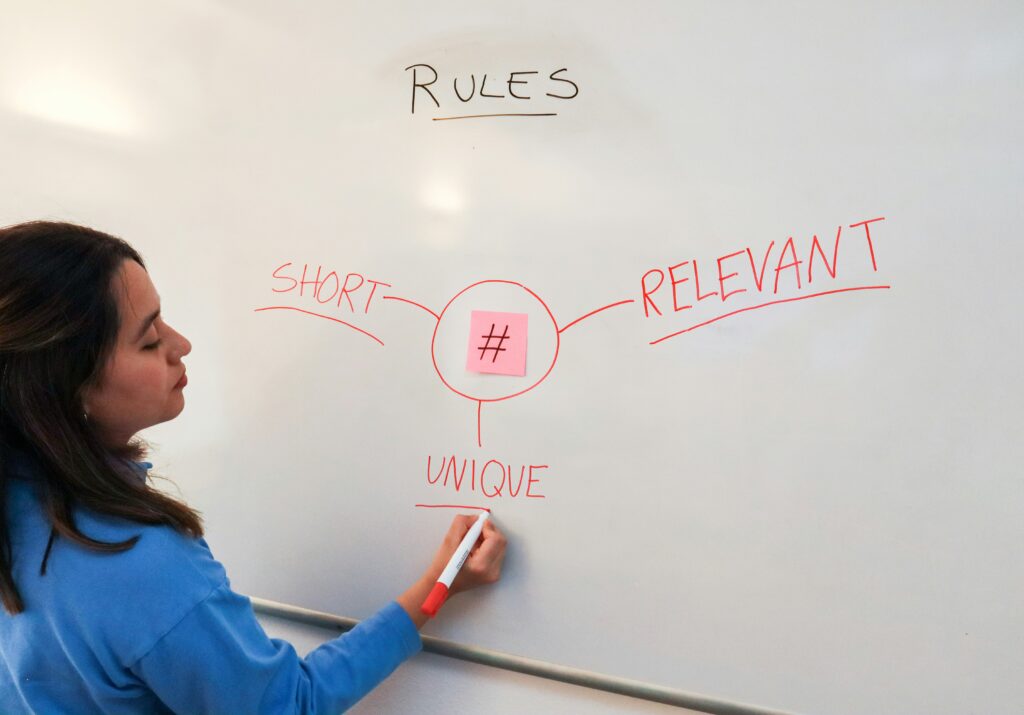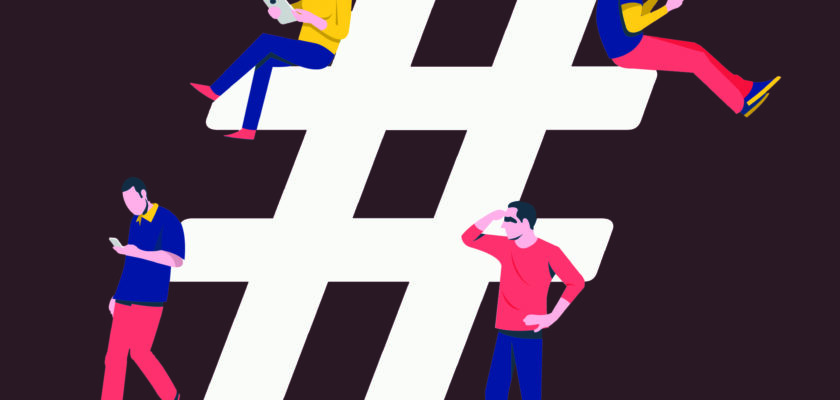Hashtags are among the most popular and free tools for promoting products or services and increasing brand recognition. They can help distinguish a blog from others – all it takes is selecting the appropriate tag. This material covers what a proper hashtag strategy includes.
Hashtags and Their Benefits

A hashtag acts as a unique link to content on a particular topic, published across all blogs on a platform. Essentially, these links can be used to filter information by tag. Some social networks allow users to save searches for a specific hashtag to view posts of interest.
The main benefits of using hashtags include:
- Identifying the target audience;
- Strengthening brand influence;
- Simplifying content search;
- Improving SEO metrics.
There are many hashtags available today, which can be divided into two groups:
- Marketing – created by companies for promotion, advertising, or sales;
- User-generated – encompassing all tags placed by users.
All hashtags can be mixed and matched, selecting the most successful option.
Proper Hashtag Strategy
Running a blog always has its goal. Depending on this, it is necessary to choose strategies for interacting with the audience and content publication. Correct implementation of hashtags is an important element of social media optimization.
Effective hashtag strategies include:
- Relevant headings. When searching information via hashtags, users pay attention to the title, as it must match their query. Often, if the title and content do not match, the post is skipped. If only a photo is posted, it should also match the description. Sometimes hashtags can be included in names/titles, but they should not be excessive.
- Choice of quantity. It is recommended to use no more than three hashtags per topic in a single post. Including a larger number of varied-topic hashtags can negatively affect the content. There’s a chance that the social network’s system will perceive such posts as spam. Also, subscribers may get confused by an abundance of hashtags.
- Correct hashtag type. It’s essential to carefully consider which type of hashtag to use for a particular post. For example, a news item should have a location and theme, while a product presentation should include the brand name and niche.
- Using popular social network hashtags. Each platform has its own set of established hashtags, such as Twitter’s #FollowFriday or #MondayMotivation. Researching the most popular hashtags is necessary to get your content to the top.
- Creating a brand hashtag. Every brand should have its memorable brand-specific hashtag. Every post should be tagged with it. It can be spread by asking subscribers to use it in their reviews and recommendations.
If the chosen strategy doesn’t work, hashtag optimization is necessary. Conduct research and select the most popular and high-frequency tags for this purpose. Special hashtag generators, like the AI Hashtags Generator from Top4Smm or others, can be used.
Hashtag Features for Different Social Networks

Each social network has its peculiarities in forming hashtags. Let’s look at the key points for each:
- Instagram. Trending tags, navigators, brand tags, and geographic ones work here. They can be used to promote posts for increased reach or categorize them. Hashtags can be used in Reels and stories on Instagram. A unique feature of this platform is the ability to place a unique hashtag directly in the account description.
- TikTok. Hashtags in this social network also have a feature – users can use different symbols, even those not clickable in other networks.
- Twitter. Spaces and other symbols are not allowed for correct tag display in the text. It is recommended to use no more than two hashtags due to the small size of a tweet’s body.
- Facebook. Any hashtags can be used as there is no approved base. The use of lowercase and uppercase letters, as well as underscores, is possible. This social network does not recommend using a large number of hashtags – such posts are perceived as spam.
- YouTube. This platform uses hashtags for navigation by certain topics. It is also not recommended to spam with a number of tags.
Conclusion
The use of hashtags in social networks opens up additional opportunities for bloggers. The most important thing is to choose the right hashtag strategy and hashtag optimisation. As a result, publications will not get lost in the sea of content and will become more recognisable.
If you don’t know where to start with your blog promotion, contact Top4Smm now.

